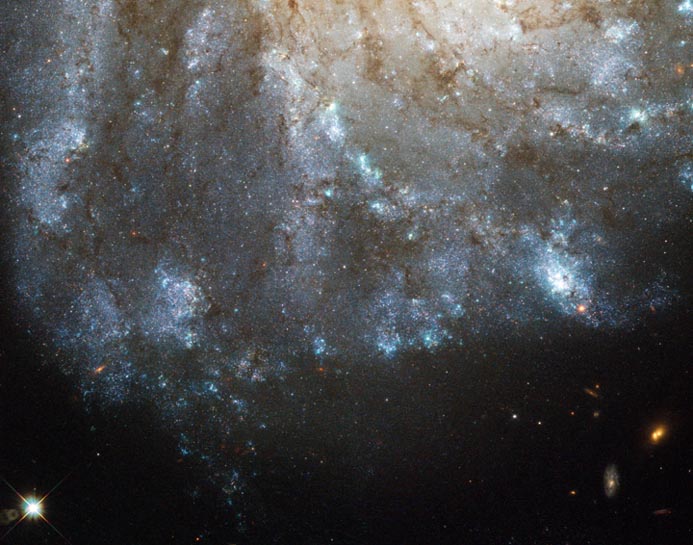
Spiral Galaxy
RA 12h 18m 55.17s Dec 14° 26' 4.46"
Coma Berenices
50 million light years
10.4
5.4 x 4.7 arcmin
North is 116.9° left of vertical
ESA/Hubble & NASA. Ack: Matej Novak
June 4, 2012
ABOUT THIS IMAGE:
This Hubble image, combining visible, infrared and ultraviolet observations, shows a detailed view of the spiral arms on one side of the galaxy M99. This galaxy is called a grand-design spiral, with long, large and clearly defined spiral arms - giving it a structure somewhat similar to our home galaxy, the Milky Way.
Messier 99 is one of over a thousand galaxies that make up the Virgo Cluster, the closest cluster of galaxies to us. Messier 99 itself is relatively bright and large, meaning it was one of the first galaxies to be discovered in the 18th century by the French astronomer Pierre Méchain in 1781. The galaxy is located 55 million light-years from Earth in the constellation Coma Berenices and has an apparent magnitude of 10.4. It can be seen using a moderately sized telescope most easily in May.
In recent years, a number of unexplained phenomena in M99 have been studied by astronomers. Among these is the nature of PTF 10fqs - one of the brighter stars in this image and visible as a yellow-orange star in the top-left corner.
What is unusual about PTF 10fqs is that it has so far defied classification. When it was discovered in April 2010, it appeared brighter than a nova (caused by an eruption on a star's surface) but fainter than a supernova (the explosion that marks the end of life for a large star). Scientists have offered a number of possible explanations, including the intriguing suggestion that the star's increased brightness could have been caused by a giant planet plunging into its parent star.
This
Hubble image was made in June 2010, during the period when the outburst
from PTF 10fqs was fading, so the star's location could be pinpointed
with great precision. These measurements will allow other telescopes to
home in on the star in future, even when the afterglow of the outburst
has faded away completely.